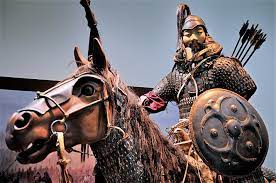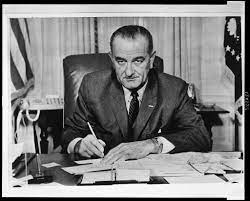When Genghis Khan, the 13th century Mongol conqueror who conquered much of the known world and created the world’s largest contiguous empire died in 1227 AD, there were rumors about the cause of his death like he had died heroically of a battle wound or that he had been castrated by a princess.
However, according to modern researchers, his death was far more uneventful. Genghis Khan’s death has been the topic of debate among scholars for nearly eight centuries. The story of how he founded the Mongol Empire and ruled over it brutally is well known and recorded. But his death remains mysterious and had caused historians to question how he died well into modern times.
Scholars generally agree that Genghis Khan passed away when he was in his mid-60s in about August 1227 as per a 14th-century text known as ‘The History of Yuan’. The text stated that he passed away eight days after falling ill. However, researchers still don’t know exactly which illness killed Genghis Khan. According to some, it was typhoid, while others felt that he died of war-related wounds like an infection caused due to injury with an arrow or a fall from his horse. There are still others who believe that a princess whom he had held captive had fatally castrated him. But new research in the modern era has shown these reasons were probably legends and had been deliberately spread by those in Khan’s coterie.

Genghis Khan’s bloody reign
The name Genghis Khan, or Chinggis Khan is famous across the world. But the actual name of the notorious Mongol conqueror was Temujin. He was born around 1162 in Mongolia and was named in honor of a Tatar chief who had been captured by his father. Temujin was descended from Khabul Khan, who had for a short time unified Mongolia against the Chinese in the early 12th century and had shown comparable competencies. Genghis Khan was born with a blood clot in his hand which according to regional lore was a marker of future leadership.
Khan stepped into his father Yesukhei’s position at the young age of nine when his father was killed by the Tatars. To do this, he was forced to kill his half-brother. He married Borte, a woman of the Konkirat tribe with whom he had four sons. This was the first step of his future legacy as an uniter of regional tribes to create a powerful Mongolia. Genghis Khan also practiced the Mongolian custom of polygamy. This would ultimately lead to his DNA being found in one in 200 men in the present day. As Khan’s power grew, his harem grew larger.
Genghis Khan also eliminated any and every competition against him. He had been temporarily enslaved by the Taichiuts at the age of 20. He created an army of 20,000 men by uniting several Mongol clans to destroy the Tatar army once and for all. Genghis ordered every male taller than three feet to be slain and then boiled the Tatar chiefs alive. He employed a vast network of spies across Northeast Asia and also used flag and smoke signals to coordinate ambushes. He also ordered his men to carry a bow with arrows, shields, daggers, and lassos. By the year 1206, his army which consisted of 80,000 men, controlled eastern and central Mongolia.
Genghis Khan’s cavalrymen also learned to ride horses without using their hands. This caused them to use lances with hooks to pull people off their horses and throw javelins while riding their horses. On defeating all the rival Mongol tribes around 1207, Temujin was officially crowned as Genghis Khan or ‘universal ruler’ and the supreme god of his tribe. However, he faced the problem of a booming population and scarce food. So, in 1209, Khan turned his gaze to China and its vast rice fields.
Genghis Khan’s death
Genghis Khan conquered the Western Xia empire in northwestern Xia very quickly. This was followed by his defeat of the Jin Dynasty. But he had to battle for nearly 20 years to win the rice fields of China. In 1219, Khan wanted to move against the Khwarizm Dynasty in the Middle East as its ruler had killed one of his diplomats and sent back the decapitated head. When Khan demanded that the Western Xia and the Jin Dynasty whom he had just conquered help him against the Khwarizm, they refused to do so and formed an alliance against the Mongols. Khan moved ahead without the two against the Khwarizm Dynasty with an Army of 200,000 men. He ruthlessly piled the skulls of the men, women, and children on mounds in every city which he destroyed in Khwarizm.
After its defeat, he turned to deal fully with the Western Xia which had defiantly refused to help him. However, he fell ill during this time but hid the fact of his impending death from his people so that their attention in the campaign against the Western Xia wouldn’t be lost. As part of this strategy, tales of his death in battle or from an infection were spread.
The legends were most probably created and didn’t take into account the fact that Khan’s family and followers were requested to keep his death a secret as it happened at the wrong time when the Mongols were on the verge of conquering the Western Xia against whom they had fought for more than 20 years according to a study published in the International Journal of Infectious Diseases.
The researchers turned to ‘The History of Yuan’ for exploring the death of Genghis Khan as it contained more accurate data. According to the text, Khan fell ill on August 18, 1227, and had a fever until he passed away on August 25. Though the earlier theories had suggested that he had died of typhoid, The History of Yuan showed no indication of any typhoid signs like nausea or stomach pain.
The study has argued that a more likely cause of his death was bubonic plague, a more ancient, historical disease which is still present. This theory is bolstered by the description of the symptoms and the duration of Khan’s illness. But it took almost a millennium to arrive at this particular diagnosis. Though the reason behind Khan’s death may have been discovered, the location of his grave is still unknown.
The search for Genghis Khan’s tomb
At the time of Khan’s death, the Mongol Empire stretched from modern-day North Korea to Eastern Europe, and from central Russia to Iran. Khan left his empire in the hands of successive descendants who ruled it till its dissolution in the 14th century. According to folklore, Genghis Khan had ordered that all remaining Western Xia were to be killed. When his body was being transported to the Mongol capital of Karakorum, his men killed everyone who tried to track their procession. His tomb was never found.
According to some, Khan was buried in a deep tomb of almost 65.6 feet as per the customs of the Eurasian Steppe. If this is true, his grave would probably have been left unmarked except for a stone marker which would have been lost with time. Khan’s legacy is one of a ruthless warlord who dominated huge amounts of territory.
He is said to have slaughtered around 40 million people and reduced the earth’s population by almost 11%. Though unproven, there is a theory that he was buried on the Burkhan Khaldun mountain in Mongolia, although the spot is not marked on any maps.











